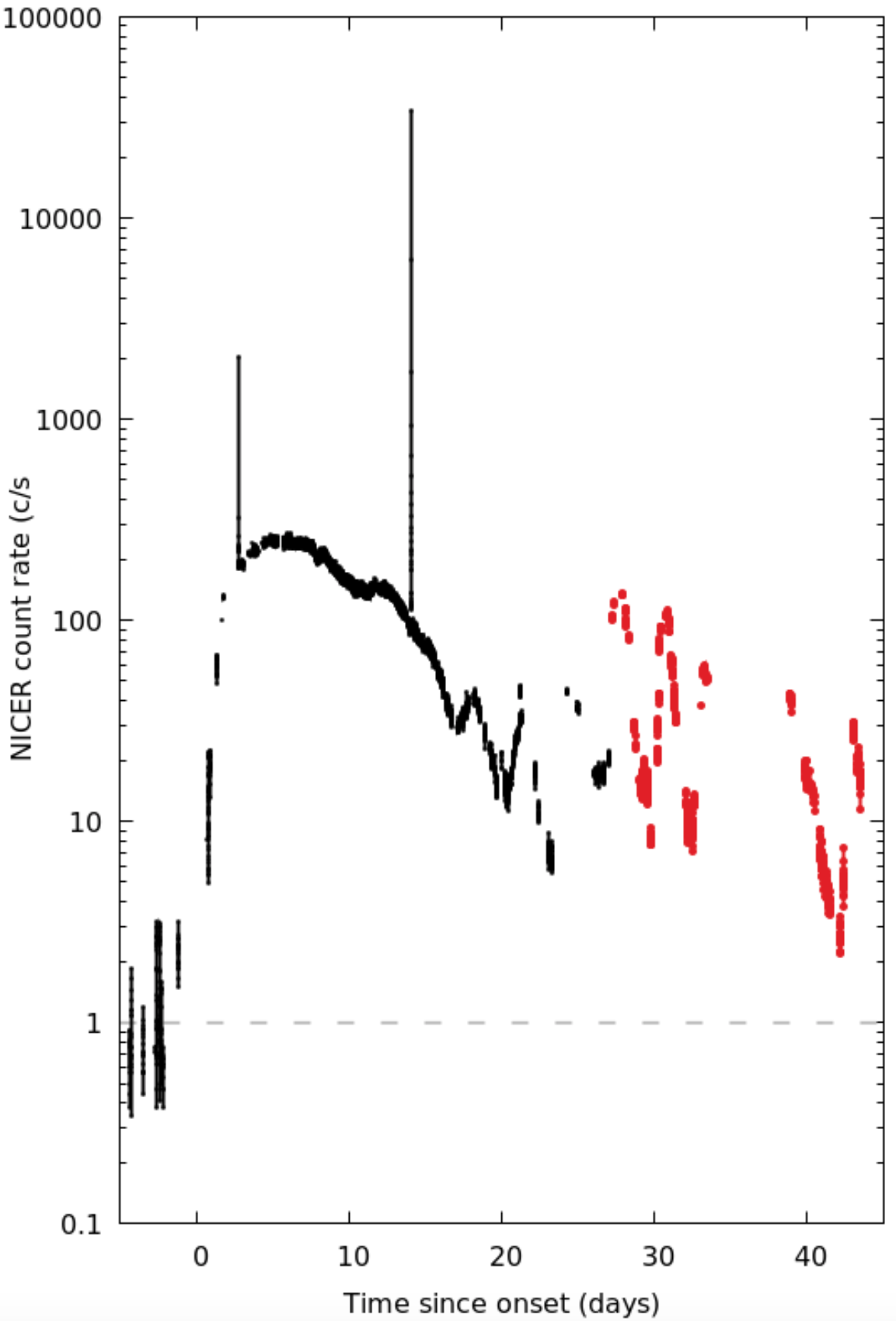NICER / ISS Science Nugget
for September 19, 2019
Unexpected changes detected in burst behavior from SAX J1808.4-3658
Over the past two decades, six outbursts of the prototypical accreting millisecond pulsar, SAX J1808.4-3658, have been
observed and monitored with a variety of X-ray telescopes. Each of these transient events has followed a stable pattern:
from first detection, the observed rate increases rapidly, and levels off after ~5 days. Subsequently, the intensity
decreases over a roughly two week timespan. Next up is a flaring state: for a few weeks to months the observed rate
oscillates up and down on a three-day cycle. The peak of each successive cycle gradually decays, until the source quiets
down entirely.
What is driving these cyclic flares remains under debate. One possibility is that the temperature in the accretion disk is
oscillating, modulating the rate at which material can flow to the star. Another explanation might be that the neutron
star magnetic field is acting as a centrifugal barrier, causing a buildup of matter that is episodically dumped onto the
star.
With NICER, we have intensively monitored the August 2019 outburst of SAX J1808. The first 25 days of this event mostly
followed the historic pattern (see Figure, black points). On day 27, however, something strange happened: the flares
suddenly became much brighter (red points). Simultaneously, the energy spectrum pivoted, showing a dramatic increase at
the lowest photon energies. Neither effect has been seen before.

Figure:
Shown here is how the observed intensity from this accreting pulsar evolved over the month that it has been in outburst.
The two sharp peaks are X-ray bursts, thermonuclear explosions on the neutron star's surface.
Thanks to NICER's sensitivity, and its ability to observe these flares at high cadence, we now have a spectacularly
detailed view of this phenomenon, which is bound to provide new clues as to the physical mechanisms that are driving them.
This is work being led by Peter Bult (NASA GSFC) of the NICER science team.
<< Previous
Main Index
Next >>